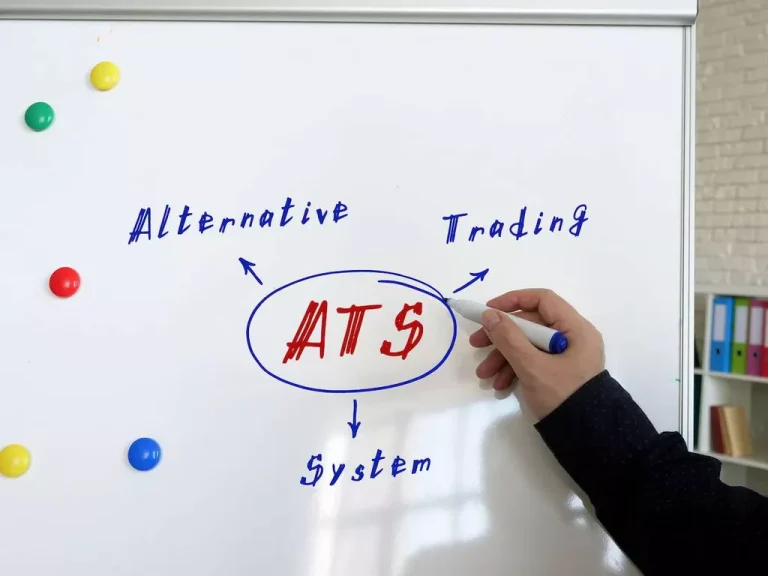Content
For instance, a sudden increase in the ADTV of a security could indicate increased market interest, which could potentially drive up its price. Conversely, a sudden decrease in the ADTV could suggest decreased market interest, which could potentially drive down its price. Any information posted by employees of IBKR or an affiliated company is based upon information that is believed to be reliable. However, neither IBKR nor its affiliates Cryptocurrency wallet warrant its completeness, accuracy or adequacy. IBKR does not make any representations or warranties concerning the past or future performance of any financial instrument. By posting material on IBKR Campus, IBKR is not representing that any particular financial instrument or trading strategy is appropriate for you.
We’ve detected unusual activity from your computer network
Daily average turnover grew by approximately 16% from October 2022 when Hong Kong reported an average of $592 billion per day. Similarly to other top-performing countries, China’s special administrative region saw the most trading activity in forex swaps, which made up 69% of the overall daily turnover ($469 billion). Currency swaps performed very poorly during this month with $4 billion, falling by around 91% from October 2022 when the region recorded $42.7 billion in daily turnover for this instrument. The forex market in the United States achieved the second-highest daily turnover in https://www.xcritical.com/ April 2022 when the volume of foreign exchange transactions averaged $1.91 trillion.

What is the Average Daily Trading Volume (ADTV)?
- In the United Kingdom, the Financial Conduct Authority (FCA) performs the function.
- It is calculated by multiplying the price of each trade by its volume, then summing these products and dividing the resulting amount by the total trading volume for the period.
- Little change in volume or declining volume on a breakout indicates a lack of interest and a higher probability of a false breakout.
- The term tick in forex is all about tick charts, so it’s important not to mix the two up.
- View the latest financial news articles from the top voices in the industry.
- The price again turns into a flat with small fluctuations within the range.
Remember, there’s no guarantee that tick volume matches the global FX volume, as there’s no centralized exchange – you’re just seeing an estimate based on your broker’s volume. Tick volume shows market activity and how many traders are currently participating in transactions. A single tick in forex represents a transaction – not its monetary value. In other markets, such as stocks, volume is a bit more straightforward as there’s a central order book that transactions are recorded in. However, this does mean that volume is a lagging indicator, as it takes a while for the data to be collected – for example, stock exchanges usually record what does high volume mean in stocks volume every 5 minutes.
What does a low ADTV indicate about a security?
Falling prices eventually force out large numbers of traders at a market bottom resulting in volatility and increased volume. We see a decrease in volume after the spike in these situations but how volume continues to play out over the next days, weeks, and months can be analyzed using the other volume guidelines. Last year, we wrote about the importance of the NYSE Closing Auction and the flexibility it provides to investors in managing risk and market impact. A year later, the single largest liquidity event of the US trading day has become larger and more important than ever before. In this post, we revisit some of the shifting dynamics of the NYSE Closing Auction and examine the impact of recent changes to the auction mechanics.
Daily Trading Volume of Singapore Forex Market

With the subsequent upward reversal, the volumes began to decline, which indicates not a new uptrend but a correction. With the continued downward movement, volumes began to rise again, confirming the trend. Trading volume is calculated by the number of stocks involved in the transaction for a specific period. And yes, there are pivot points, and buy/sell zones, which in my view are all redundant to information you already get using SMA’s, EMA’s, trend/algo lines and horizontal Support/Resistance. Average trading volume has been consistently rising during the past two decades, jumping by nearly 506% between 2001 and 2022.
With these considerations in mind, trading volume can be a valuable tool in a trader’s toolkit, helping them to make more informed decisions and potentially increase their profitability in the markets. Trading volume is usually higher when the price of a security is changing. News about a company’s financial status, products, or plans, whether positive or negative, will usually result in a temporary increase in the trade volume of its stock. In the world of trading, there are numerous terms and concepts that traders must familiarize themselves with to effectively navigate the market.
The Volume indicator displays the volumes of assets bought or sold over a certain period. The green color of the histogram column means that the volume of the current candle exceeds the volume of the previous one. The red color of the column indicates that the volume of the current candle is less than the previous one. The horizontal price movement was accompanied by equal relatively small volumes. This is the first sign that the price will soon come out of the flat (while the exact future direction of the breakout is unknown).
Participants who waited and are afraid of missing more of the move begin to pile in at market tops, exhausting the number of buyers. Daily market summary represents volume from all trading venues on which Nasdaq® Issues are traded. The stock soared on Metaverse developments, the expanding market for electric vehicles with self-driving features, a brief rekindling of the crypto-mining trend, and more.
It is calculated as the difference between the volume of purchases and sales for a particular time period. It is used together with technical analysis tools to determine market strength and trend direction. On the exchange stock market, stocks with a turnover of up to 300 thousand per day are considered low-liquid.
Volume of trade, also known as trading volume, refers to the quantity of shares or contracts that belong to a given security traded on a daily basis. In other words, trading volume provides a measure of the number of shares that are transacted between a given time period. Trading volume refers to the total number of shares, contracts, or units of an asset that are bought and sold during a given period of time. It is a measure of the level of activity in a particular market or asset and can be analyzed in different ways, most commonly as volume-by-timeframe and volume-by-price.
Conversely, a high average trading volume shows greater interest in the stock and is generally interpreted as meaning that many investors believe the stock will rise in price over time. Average daily trading volume can be tracked for a single stock, for options on a stock, or for market indexes such as the S&P 500. Are the price increases happening on lower than average volume and the decreases on higher – is the OBV dropping even the stock is going up? Well it may not be time to short (you need confirmation first), but one should definitely consider exiting any longs. Continue reading for more detailed information on these top-performing currencies.
Chaikin Money Flow can be used as a short-term indicator because it oscillates but it’s more commonly used for seeing divergence. Chaikin Money Flow focuses on expanding volume when prices finish in the upper or lower portion of their daily range and then provides a value for the corresponding strength. Indicators aren’t required but they can aid in the trading decision process. It might indicate that a reversal is underway and that prices will change direction after a long price move higher or lower and the price begins to range with little price movement and heavy volume. These are generally sharp moves in price combined with a sharp increase in volume that signals the potential end of a trend.
One such term is the Average Daily Trading Volume (ADTV), an essential metric that provides insight into the liquidity of a particular security. This article delves into the intricacies of ADTV, its significance, how it’s calculated, and its implications for traders. The MFI helps traders spot overbought and oversold market conditions, which provides insights into when a change in direction could occur. The money flow index oscillates on a scale between zero to 100 – with a reading above 80 indicating overbought conditions, and under 20 indicating the market is oversold. The money flow index (MFI) uses historical price data and volume to show the rate at which money is invested into a currency and out of it. It helps to measure supply and demand, which is more difficult to assess in the decentralized forex market.
A low-volume FX pair means it will have less liquidity, as there are fewer traders buying and selling the currency. This example shows the massive sale of the Swiss bank Credit Suisse stocks in the spring of 2023 after it was on the verge of bankruptcy. You can see high trading volumes due to panic selling as the price falls.
It’s usually interpreted as a bullish sign if the price doesn’t fall below the previous low on the move back lower and if the volume is diminished on the second decline. This can be hard to wrap your mind around but the simple fact is that a price drop or rise on little volume isn’t a strong signal. A price drop or rise on large volume is a stronger signal that something in the stock has fundamentally changed. The trader takes a 0.10% of fund size position in GE, which is about $1 million. This is below the 10% trading constraint, exceeds the minimum allocation of $250,000 and is also below the $5 million maximum allocation. 3 Includes all regular hours, regular-way trades of at least 1 round lot reported by the TRF.